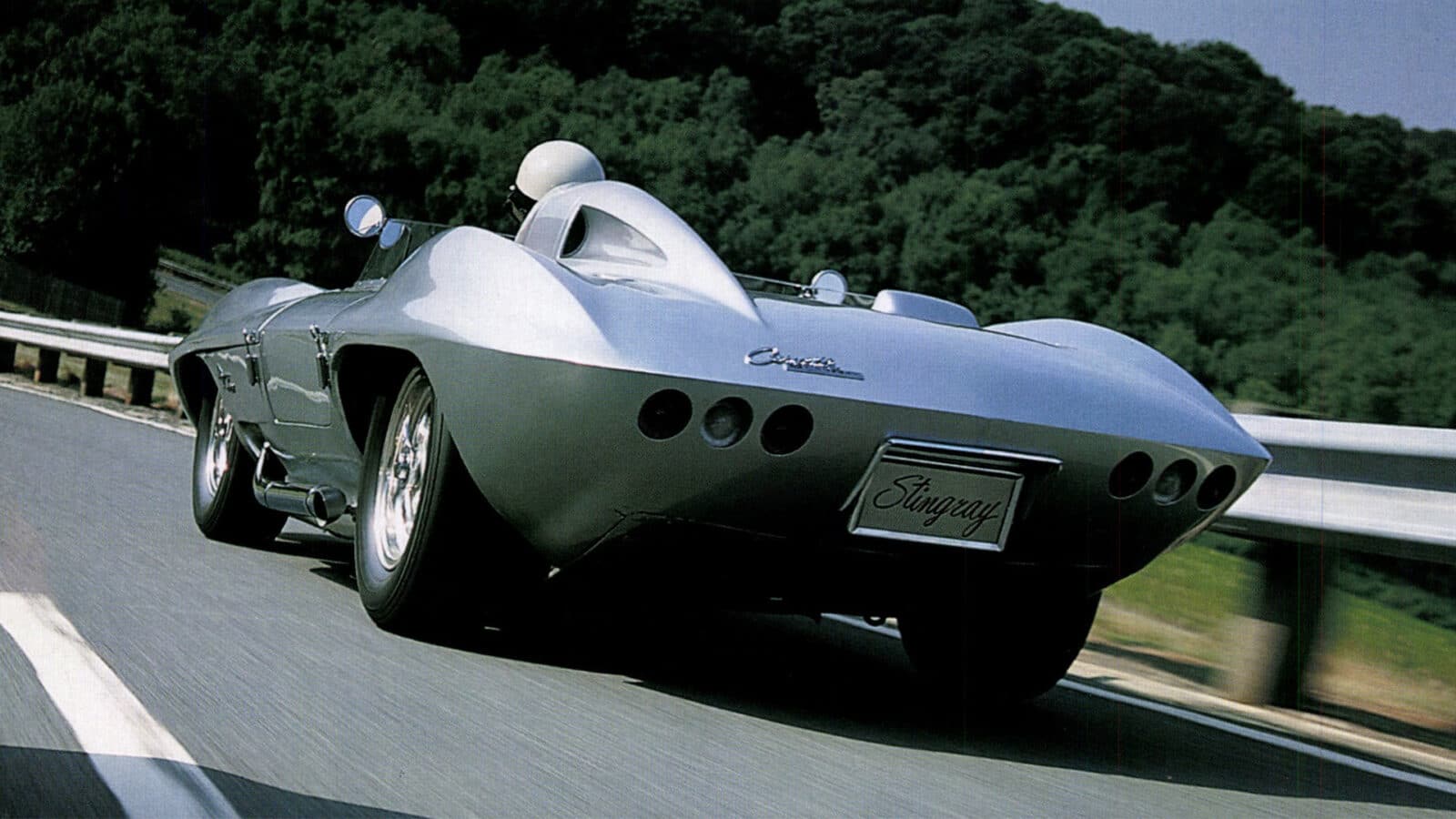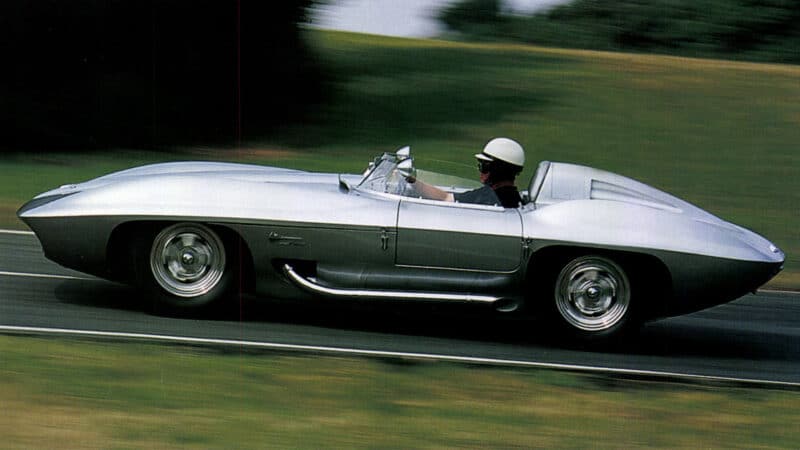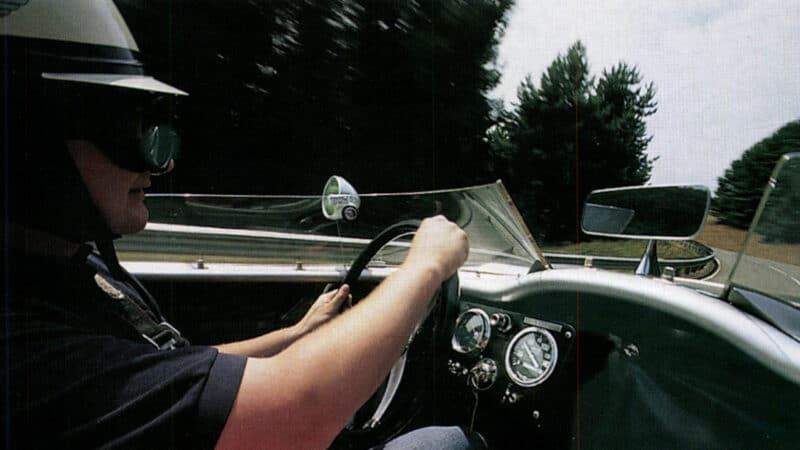Chevrolet’s first-ever factory involvement in racing had taken place when ex-works Mercedes driver John Fitch oversaw a team of three road car-based Corvettes at the 1956 Sebring 12 Hours. As Duntov had predicted, they were easily outclassed by the specialised Jaguar D-types and Italian exotica. But GM president Ed Cole was excited by the project and by mid-year had handed Duntov his ideal remit: to build a bespoke Chevrolet sports-racer.
In a walled-off corner of the Chevrolet factory, the steel tubular spaceframe SS chassis and body were designed, complete with a fuel-injected 283 cubic inch (that’s 4.63 litres to us Limeys) V8. The first chassis, fitted with a makeshift fibreglass body, became known as the SS Mule and stacked up over 2000 miles of testing in the run-up to Sebring in ’57. The team, meanwhile, were desperately putting the finishing touches to the magnesium bodywork of the race car.
The day before the event, no less than Juan Manuel Fangio and Stirling Moss tried out the Mule, and both came away impressed – indeed, ‘The Maestro’ lopped 2sec off his fastest lap from the previous year. But the late arrival of the race car put Fangio off, leaving Fitch to share it with Piero Taruffi. The American ran as high as sixth in the early stages before a catalogue of problems meant an early exit.
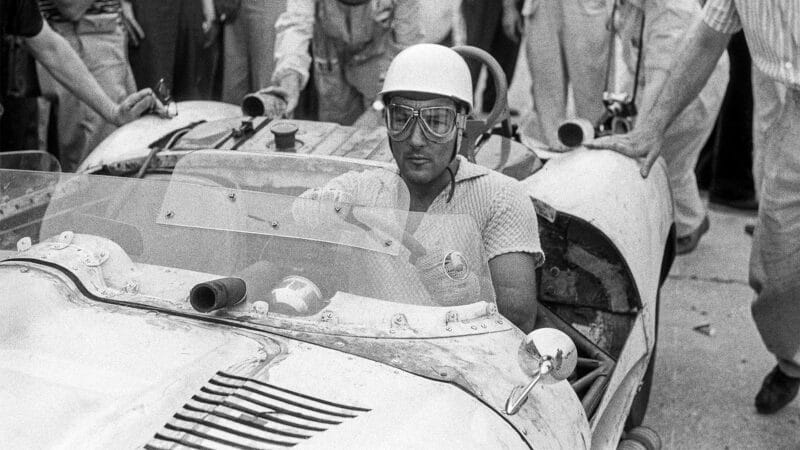
Moss trials the experimental Zora Duntov designed Chevrolet Corvette SS during practice for the 1957 Sebring 12 Hours
Getty Images
Three entries were filed for Le Mans, but in May Duntov was told to close down his racing department. The Automobile Manufacturers Association had made a proclamation that road safety was being jeopardised because motor sport encouraged high speeds, and General Motors leapt on the bandwagon banning racing. The SS was over as quickly as it had begun – but it had a knock-on effect.
A racing fan since the pre-war days, Mitchell used the inspiration of the SS to design a clay model of a concept shape for a road-going car called the Q-Corvette. He aspired to have this replace the boxy 1950s shape of the ‘Vette, and came up with the notion of turning it into practice via a racer paid for out of his own pocket. Against Duntov’s wishes, Mitchell used his own newly acquired political clout to commandeer the SS Mule chassis in 1958.
What really interested Mitchell was the shape that would clothe the chassis. His aim was for his department to produce a body akin to that of a shark, but the result of his and Larry Shimoda’s after-hours project was more reminiscent of another sea-going predator and it was soon tagged the Sting Ray.
Aware of the trend to enable easy access to the internals, Mitchell designed the two body sections to be hinged fore and aft to open in a clam fashion. Now, before I step aboard, we unfasten the silver panels (which are, crucially, still the originals) to inspect the Sting Ray’s innards.
The underside of such beauty is less aesthetically pleasing: the three-skin fibreglass body, which is supported by balsa wood (!) cross members, is finished in matt black enamel. The spaceframe chassis looks crude in comparison to rivals of the day — the delicate intricacy of a Birdcage or the subtlety of a Porsche RSK. But it matters little, for the eye is drawn immediately to the gleaming brute ahead of the cockpit.
Nowadays the engine bay holds a 327 cubic inch V8, as opposed to the 283 that pumped out 280bhp at 6200rpm for the Sting Ray’s racing career in 1959-60. (On the car’s retirement Mitchell fitted a 7-litre 427 mill for his personal road-going pleasure!) Mitchell experimented with aluminium heads, but the same Rochester fuel injection system from the SS Mule was retained for the Sting Ray along with much of the rest of the driveline and de Dion rear suspension.
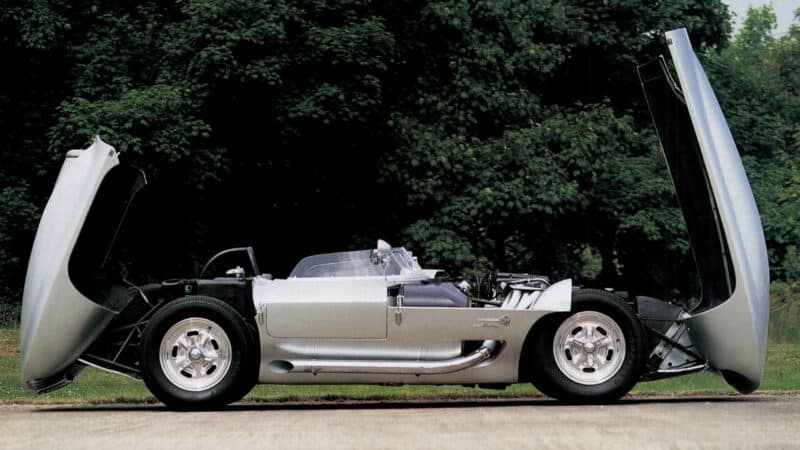
Under the hoods of the Sting Ray
Charlie Magee
Disc brakes were fitted after the car’s racing career was over, and the huge ducts that lead air to the inboard rear stoppers speak volumes about the difficulties Thompson faced while racing the car with its outdated drums.
In the cockpit the only link to the SS is the three-spoke steering wheel, which is removable for easy access. It’s spartan inside, but the upright seating position is comfortable and gives an easy eyeline to the four gauges in front – oil pressure, oil and water temperature, and the tachometer to the right. The speedometer, an addition to comply with road-going specs for Mitchell’s later enjoyment, is completely obscured by the wheel. Also effectively redundant are the side mirrors, the racer’s central fitting being the main aid. The two-stage ignition sits to the right and, with a little help of the throttle, at the second try, we have lift off.
